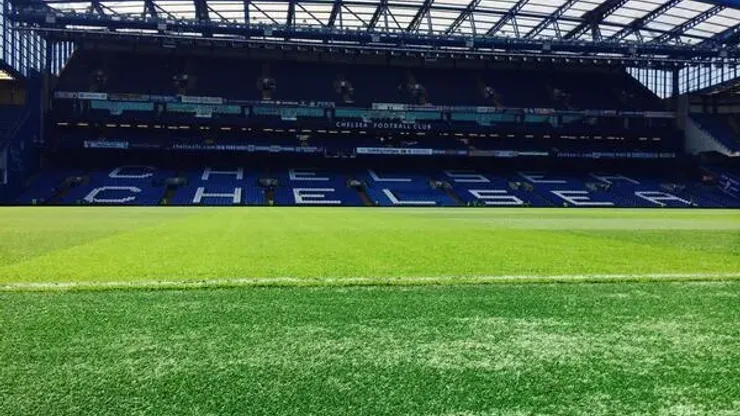One of the more pressing issues facing a number of Premier League clubs, as we edge ever nearer to the end of 2014, is the prospect of either building a new stadium or expanding an existing home following years of risk free wait and see policies.
We have seen the news earlier this month involving Everton Football Club’s desire to build a new stadium not too far from their current home Goodison Park as part of the Walton Hall Park Project, whilst Merseyside rivals Liverpool are also in the process of expanding Anfield after years of opposition from local residents.
Tottenham Hotspur are another club hoping to be playing their football at a new venue by 2018 at the earliest, however there are a number of issues prohibiting movement on that project.
Chelsea are just the latest club to announce plans to redevelop their current ground and the process of a Stamford Bridge expansion moved a step closer yesterday as it emerged the Russian Oligarch backed club have been in preliminary talks with the Rugby Football Union with regards to moving to Twickenham for one season whilst Stamford Bridge is under reconstruction.
The main focus on Chelsea’s part is a bid to make the club more self-sufficient with regards to UEFA’s seemingly stringent Financial Fair Play regulations. Whilst the finance is there in the form of Roman Abramovich’s wealth, we are heading into a period where Chelsea’s own financial muscle will be tested separately from the vaults of Abramovich for the first time in his decade long spell as the club’s financial figurehead.
The increased capacity from the current 41,623 to a 60,000 capacity would vastly increase matchday revenue as well as possible hikes in ticket prices that would follow. This would further burst Chelsea’s own coffers which would look favourable in the eyes of UEFA.
In fairness this is a subject which has been at the forefront of Chelsea’s minds for a while now. One of the obstacles in Roman Abramovich’s way has been the presence of the Chelsea Pitch Owners plc, who own both the freehold of Stamford Bridge stadium as well as the naming rights to Chelsea Football Club.
This, a measure brought in to avoid the club repeating the mistakes of previous years where the ground fell into the hands of property developers due to financial issues at the club. The CPO group negotiated a deal which saw Chelsea have a 199-year lease of Stamford Bridge. However the CPO voted 61.6% in favour of Chelsea buying back the freehold, which would smoothen the process of a new stadium, however this fell short of the 75% majority vote required.
The club’s supporters then vehemently opposed a possible move to the Battersea Power Station site, leaving the club few options.
With the club now looking to remain at Stamford Bridge there are likely to be fewer issues with the CPO and naming rights however structurally there could be issues.
In June, as reported by Elizabeth Hopkirk of Building.co.uk, Roman Abramovich had ordered a study into how best to redevelop and maximise the area within and around Stamford Bridge. The last significant redevelopment of the ground came in the 1990s as part of Ken Bates’ plan to not only make Stamford Bridge compliant with British all-seater regulations but also more profitable.
One of the problems facing the redevelopment project is the railway lines situated on both the east and north sides of the ground. There is also the hotel situated behind the Shed End which makes room very cramped with relation to expansion.
One of the possible fixes for Chelsea could be the use of decking over the aforementioned railway lines which would allow them to work around the obstacles of restriction and improve public access to the stadium as well as the area around the ground, which would be imperative with almost an extra 20,000 supporters expected on match days should the expansion go ahead.
The Shed End itself could have an extra tier added onto it, however due to the fact that area of the ground currently houses travelling supporters, there could be more issues there.
The opposite end however could also be subject to the same treatment although there would have to be considerable work done with the roofing structure similar to what we are seeing at the Etihad Stadium currently and even the Stade Velodrome in Marseille last term as France prepares to host Euro 2016.
The main worries for Chelsea are the areas around the ground necessary for public access and if these issues can be cleared with the proposed decking idea, the prospect of expanding Stamford Bridge would look increasingly likely.
200+ Channels With Sports & News
- Starting price: $33/mo. for fubo Latino Package
- Watch Premier League, Women’s World Cup, Euro 2024 & Gold Cup
The New Home of MLS
- Price: $14.99/mo. for MLS Season Pass
- Watch every MLS game including playoffs & Leagues Cup
Many Sports & ESPN Originals
- Price: $10.99/mo. (or get ESPN+, Hulu & Disney+ for $14.99/mo.)
- Features Bundesliga, LaLiga, Championship, & FA Cup
2,000+ soccer games per year
- Price: $5.99/mo
- Features Champions League, Serie A, Europa League & Brasileirāo
175 Premier League Games & PL TV
- Starting price: $5.99/mo. for Peacock Premium
- Watch 175 exclusive EPL games per season






